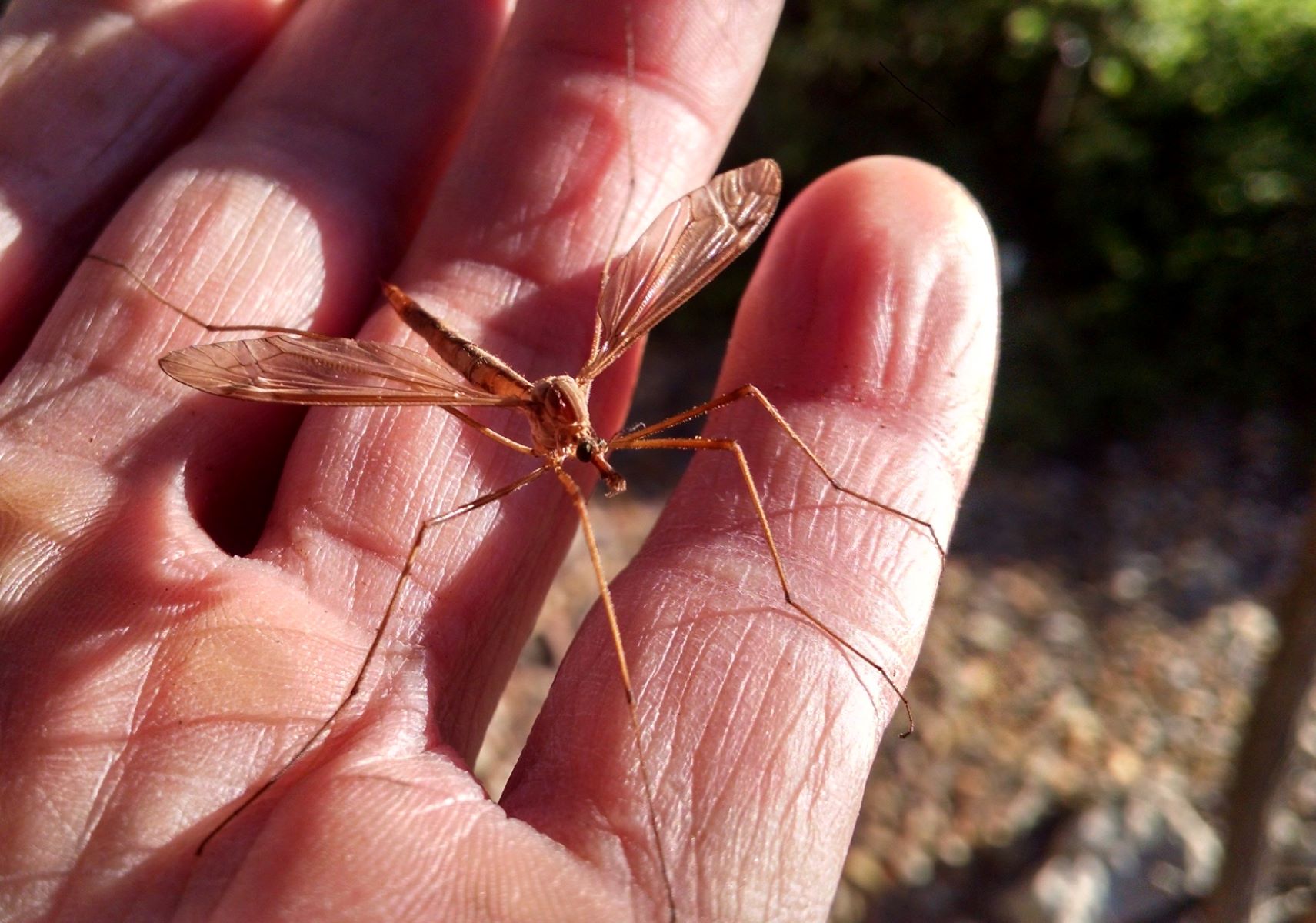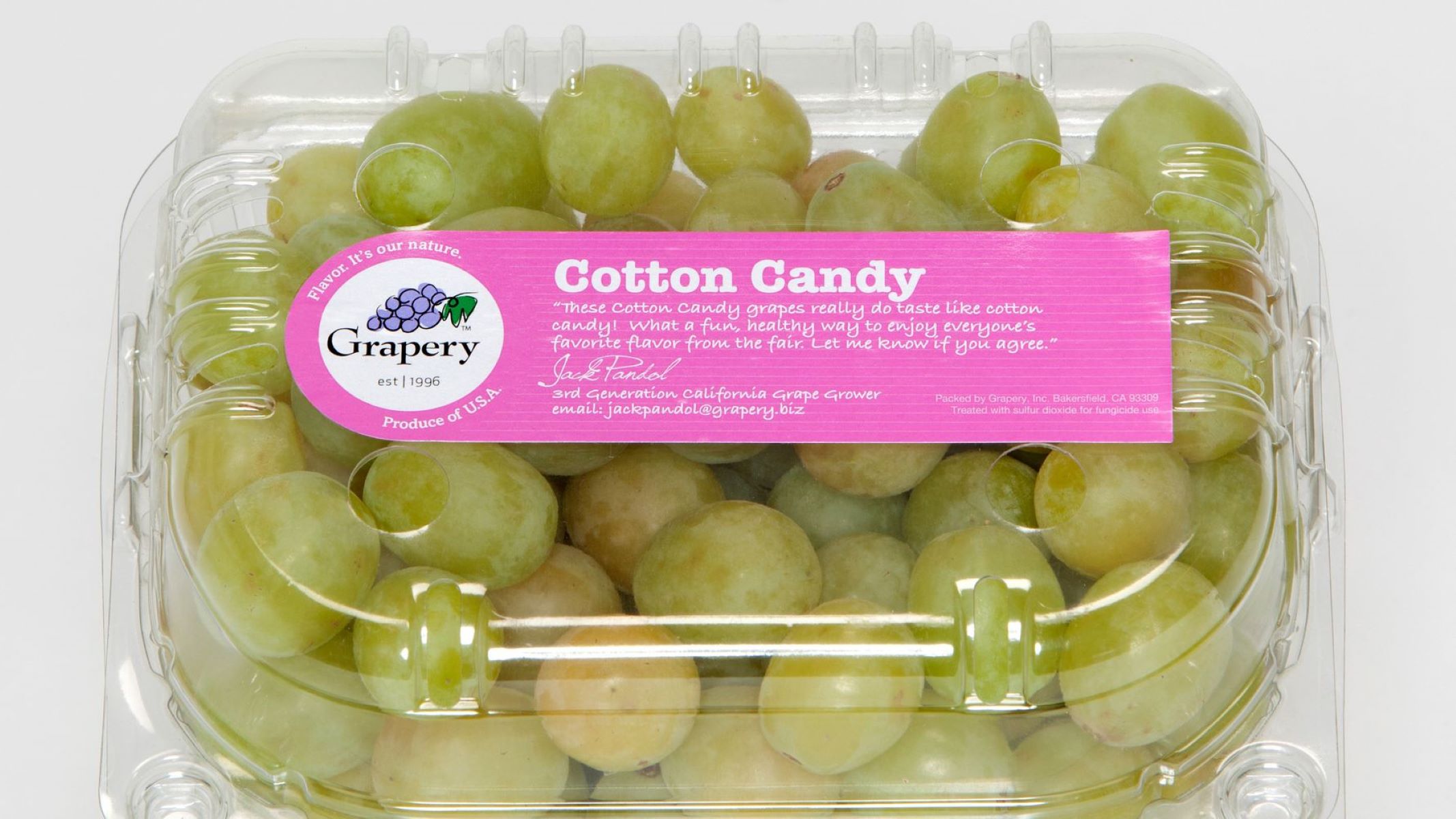Home>Science>Shocking Truth: Mosquito Eaters Vs. Mosquitoes – What You Need To Know!


Science
Shocking Truth: Mosquito Eaters Vs. Mosquitoes – What You Need To Know!
Published: February 15, 2024
Learn the science behind mosquito eaters and mosquitoes. Discover the shocking truth and what you need to know to protect yourself.
(Many of the links in this article redirect to a specific reviewed product. Your purchase of these products through affiliate links helps to generate commission for Regretless.com, at no extra cost. Learn more)
Table of Contents
Introduction
Mosquitoes are a familiar nuisance for many, especially during warm summer evenings. Their itchy bites can disrupt outdoor activities and lead to uncomfortable nights. However, there is a common misconception surrounding a group of insects known as "mosquito eaters." These creatures have long been thought to be the natural predators of mosquitoes, but the truth behind their role in the ecosystem and their impact on controlling mosquito populations may surprise you.
In this article, we will delve into the intriguing world of mosquito eaters and uncover the shocking truth about their relationship with mosquitoes. We will explore the misconceptions surrounding these fascinating insects, compare their characteristics and behaviors with those of mosquitoes, and shed light on their vital role in maintaining ecological balance. Additionally, we will reveal the benefits of having mosquito eaters in your surroundings and provide valuable insights on how to attract them to your yard.
Prepare to be amazed as we unravel the mystery of mosquito eaters and their interaction with mosquitoes. By the end of this article, you will gain a deeper understanding of these remarkable insects and their significance in the delicate web of life. Let's embark on this enlightening journey to discover the truth about mosquito eaters and their intriguing relationship with mosquitoes.
The Misconception of Mosquito Eaters
The term "mosquito eaters" may conjure images of insects voraciously consuming pesky mosquitoes, offering a glimmer of hope for those seeking relief from these bloodthirsty pests. However, the reality is far from this widely held belief. The creatures commonly referred to as mosquito eaters are actually members of the crane fly family, scientifically known as Tipulidae. These delicate insects are often mistaken for oversized mosquitoes due to their similar appearance, leading to the misconceived notion that they actively prey on mosquitoes.
The misnomer "mosquito eater" likely originated from the mistaken assumption that these harmless insects feed on mosquitoes. This fallacy has perpetuated over time, contributing to the misconception that mosquito eaters serve as natural predators that help control mosquito populations. In reality, crane flies, often inaccurately labeled as mosquito eaters, do not possess the predatory instincts or feeding habits associated with consuming mosquitoes. Instead, they primarily feed on nectar and other plant-based substances, playing a role in pollination and contributing to the ecological balance in their habitats.
This widespread misunderstanding has led to misconceptions about the efficacy of mosquito eaters in managing mosquito populations. While the presence of crane flies may indicate a thriving ecosystem with abundant food sources and suitable environmental conditions, it is essential to recognize that they do not serve as a reliable solution for mosquito control. Understanding the true nature of mosquito eaters and their ecological role is crucial for dispelling the misconceptions and fostering a more accurate understanding of their significance in the natural world.
As we unravel the truth about mosquito eaters, it becomes evident that their role in the ecosystem extends beyond the erroneous perception of consuming mosquitoes. By examining their behavior, ecological impact, and interactions with other organisms, we can gain a deeper appreciation for these fascinating insects and their contributions to the intricate web of life. Let's continue our exploration to uncover the captivating reality of mosquito eaters and their compelling relationship with mosquitoes.
The Role of Mosquito Eaters in the Ecosystem
Mosquito eaters, scientifically known as crane flies, play a significant role in the delicate balance of ecosystems, contributing to the vitality and sustainability of their habitats. While they are often misidentified as mosquito predators, their true ecological significance lies in their interactions with various organisms and their impact on the environment.
One of the primary roles of mosquito eaters in the ecosystem is their contribution to pollination. These gentle insects, with their slender bodies and elongated legs, are adept at visiting flowers to feed on nectar, inadvertently transferring pollen from one bloom to another. This pollination process is instrumental in the reproduction of flowering plants, ensuring the production of seeds and the continuation of plant species. By engaging in pollination activities, mosquito eaters facilitate the proliferation and diversity of flora within their habitats, exerting a positive influence on the overall ecological landscape.
Furthermore, mosquito eaters serve as a vital food source for various organisms within their ecosystems. Their presence sustains the intricate food web, as they are consumed by predators such as birds, amphibians, and other insect-eating animals. By occupying a position within the food chain, mosquito eaters contribute to the energy flow and dynamics of their ecosystems, supporting the survival and well-being of numerous species.
Additionally, the larvae of crane flies, often found in moist soil or aquatic environments, play a role in nutrient cycling and decomposition. As they consume organic matter and decaying plant material, they contribute to the breakdown of detritus, facilitating the recycling of nutrients back into the ecosystem. This process of nutrient cycling is essential for maintaining the fertility of the soil and sustaining the growth of plants, thereby influencing the overall productivity and health of the ecosystem.
Mosquito eaters also contribute to the biodiversity and ecological resilience of their habitats. Their presence indicates the presence of suitable environmental conditions, including ample food sources and suitable breeding sites. As a result, the abundance of mosquito eaters reflects the overall health and stability of the ecosystem, serving as an indicator of its capacity to support a diverse array of life forms.
In essence, the role of mosquito eaters in the ecosystem encompasses pollination, serving as a food source, contributing to nutrient cycling, and indicating environmental health. By understanding and appreciating their multifaceted contributions, we can recognize the intricate connections that sustain the balance and vitality of natural environments. The significance of mosquito eaters extends far beyond their misunderstood reputation as mosquito predators, highlighting their integral role in the intricate tapestry of life.
Mosquito Eaters vs. Mosquitoes: A Comparison
When contrasting mosquito eaters with mosquitoes, it becomes evident that these two groups of insects exhibit striking differences in their physical characteristics, behaviors, and ecological roles. Despite the common misconception surrounding the predatory nature of mosquito eaters, a closer examination of their attributes and habits reveals intriguing disparities between these fascinating creatures.
Physical Characteristics:
- Mosquitoes are typically small, slender insects with elongated mouthparts designed for piercing and sucking blood. Their bodies are equipped with specialized sensory organs that enable them to locate potential hosts for blood meals.
- In contrast, mosquito eaters, or crane flies, are characterized by their delicate, elongated bodies and long, slender legs. Their appearance often leads to confusion with mosquitoes, but a closer look reveals their distinct lack of blood-feeding mouthparts.
Feeding Habits:
- Mosquitoes are notorious for their blood-feeding behavior, relying on the nutrients obtained from blood to support the development of their eggs. This feeding habit contributes to their status as vectors for various diseases, posing health risks to humans and animals.
- On the other hand, mosquito eaters do not exhibit blood-feeding behavior. Instead, they primarily feed on nectar, plant juices, and other sweet liquids, fulfilling their nutritional needs without relying on blood meals. Their non-threatening feeding habits set them apart from the blood-seeking tendencies of mosquitoes.
Reproductive Strategies:
- Mosquitoes are known for their rapid reproductive capabilities, with females laying eggs in stagnant water sources. The aquatic larvae develop into pupae before emerging as adult mosquitoes, perpetuating their life cycle and contributing to population growth.
- In contrast, mosquito eaters, as crane flies, undergo a distinct reproductive process. Their eggs are laid in various terrestrial or aquatic habitats, and the resulting larvae play a vital role in nutrient cycling and ecological processes, contributing to the health and balance of their ecosystems.
Ecological Impact:
- Mosquitoes are often viewed as pests due to their blood-feeding behavior and the potential transmission of diseases. Their presence can significantly impact human health and outdoor activities, leading to the implementation of mosquito control measures.
- Mosquito eaters, despite their misnomer, contribute positively to their ecosystems through pollination, serving as a food source for other organisms, and participating in nutrient cycling. Their presence indicates a thriving and balanced environment, promoting ecological resilience and biodiversity.
By examining these distinct characteristics and ecological roles, it becomes clear that mosquito eaters and mosquitoes represent contrasting facets of the insect world. While mosquitoes are associated with health concerns and nuisance, mosquito eaters, or crane flies, offer valuable contributions to their habitats, enriching the intricate tapestry of life with their unique attributes and ecological significance.
Do Mosquito Eaters Really Eat Mosquitoes?
The question of whether mosquito eaters truly consume mosquitoes has been a subject of persistent misconception and confusion. Despite their misleading moniker, the reality is that mosquito eaters, commonly known as crane flies, do not exhibit predatory behavior towards mosquitoes. This revelation challenges the prevailing belief that these gentle insects actively feed on mosquitoes, reshaping our understanding of their ecological role and dietary preferences.
Mosquito eaters, characterized by their delicate appearance and elongated legs, primarily feed on nectar, plant juices, and other sweet liquids. Their non-aggressive feeding habits set them apart from the blood-feeding tendencies of mosquitoes. Unlike mosquitoes, which rely on blood meals for egg development, mosquito eaters fulfill their nutritional needs without seeking out mosquitoes as a food source. This fundamental distinction dispels the myth of mosquito eaters as voracious predators of mosquitoes and underscores the importance of accurate knowledge in dispelling misconceptions.
The misnomer "mosquito eater" likely stems from the visual resemblance of crane flies to mosquitoes, leading to the erroneous assumption that they actively prey on mosquitoes. This misconception has persisted over time, contributing to the widespread belief in the predatory nature of mosquito eaters. However, a closer examination of their feeding behavior and ecological contributions reveals the truth behind their dietary preferences, highlighting the need to dispel the long-standing myth surrounding their alleged consumption of mosquitoes.
By dispelling the myth of mosquito eaters as mosquito predators, we gain a clearer understanding of their ecological significance and the intricate web of interactions that shape their role in the ecosystem. As gentle pollinators and contributors to nutrient cycling, mosquito eaters play a vital part in maintaining the balance and vitality of their habitats, enriching the natural world with their unique contributions. This newfound understanding allows us to appreciate the true nature of mosquito eaters and their valuable role in the intricate tapestry of life.
In essence, the revelation that mosquito eaters do not consume mosquitoes challenges the prevailing misconception, prompting a reevaluation of their ecological significance and dispelling the long-standing myth surrounding their dietary habits. By embracing this newfound understanding, we can foster a more accurate perception of mosquito eaters and recognize the multifaceted contributions that define their essential role in the intricate web of life.
The Benefits of Mosquito Eaters
The presence of mosquito eaters, or crane flies, offers a myriad of benefits that extend beyond the erroneous perception of their role as mosquito predators. These gentle insects contribute to the ecological balance and vitality of their habitats, exerting a positive influence on the surrounding environment. By examining their multifaceted contributions, we can gain a deeper appreciation for the valuable benefits that mosquito eaters bring to the natural world.
One of the prominent benefits of mosquito eaters lies in their role as pollinators. These delicate insects visit flowers to feed on nectar, inadvertently transferring pollen from one bloom to another. This pollination process is instrumental in the reproduction of flowering plants, ensuring the production of seeds and the continuation of plant species. By engaging in pollination activities, mosquito eaters facilitate the proliferation and diversity of flora within their habitats, contributing to the overall ecological health and floral abundance.
Additionally, the presence of mosquito eaters indicates a thriving and balanced ecosystem. Their abundance reflects the availability of suitable environmental conditions, including ample food sources and favorable breeding sites. As a result, the presence of mosquito eaters serves as an indicator of the ecosystem's capacity to support a diverse array of life forms, promoting ecological resilience and biodiversity.
Furthermore, mosquito eaters serve as a vital food source for various organisms within their ecosystems. Their presence sustains the intricate food web, as they are consumed by predators such as birds, amphibians, and other insect-eating animals. By occupying a position within the food chain, mosquito eaters contribute to the energy flow and dynamics of their ecosystems, supporting the survival and well-being of numerous species.
Moreover, the larvae of crane flies, often found in moist soil or aquatic environments, play a crucial role in nutrient cycling and decomposition. As they consume organic matter and decaying plant material, they contribute to the breakdown of detritus, facilitating the recycling of nutrients back into the ecosystem. This process of nutrient cycling is essential for maintaining the fertility of the soil and sustaining the growth of plants, thereby influencing the overall productivity and health of the ecosystem.
In essence, the benefits of mosquito eaters encompass their role as pollinators, their contribution to the food web, their indicator of a thriving ecosystem, and their involvement in nutrient cycling. By recognizing and acknowledging these valuable benefits, we can gain a deeper understanding of the essential role that mosquito eaters play in enriching and sustaining the delicate balance of natural environments.
How to Attract Mosquito Eaters to Your Yard
Attracting mosquito eaters, or crane flies, to your yard can contribute to the ecological balance and vitality of your outdoor space while offering valuable benefits to the surrounding environment. By creating a welcoming habitat for these gentle insects, you can encourage their presence and promote a thriving ecosystem within your yard. Here are several effective strategies to attract mosquito eaters to your outdoor environment:
-
Plant Native Flowers: Cultivate a diverse array of native flowering plants in your yard to provide abundant nectar sources for mosquito eaters. Select a variety of flowering species that bloom at different times throughout the year, ensuring a continuous supply of nectar to sustain these gentle pollinators. Native flowers such as coneflowers, black-eyed Susans, and bee balm are attractive options that can entice mosquito eaters with their rich nectar reserves.
-
Create Moist Areas: Mosquito eaters are often found in environments with moist soil and adequate humidity. Introduce features such as shallow birdbaths, small ponds, or damp areas with organic mulch to provide suitable resting and breeding sites for crane flies. These moist habitats can mimic the natural environments favored by mosquito eaters, enhancing the appeal of your yard as a welcoming habitat for these beneficial insects.
-
Minimize Pesticide Use: Reduce the use of chemical pesticides and insecticides in your yard to create a more hospitable environment for mosquito eaters. These gentle insects are sensitive to environmental toxins, and minimizing pesticide applications can help maintain a healthy ecosystem that supports their presence. Embrace natural pest control methods and sustainable gardening practices to create a balanced and inviting habitat for mosquito eaters.
-
Maintain Vegetation Structure: Preserve diverse vegetation structure in your yard, including tall grasses, shrubs, and trees, to provide suitable resting and sheltering sites for mosquito eaters. The presence of varied vegetation can create a welcoming environment that accommodates the diverse needs of crane flies, encouraging them to frequent your yard and contribute to its ecological vibrancy.
-
Limit Artificial Lighting: Minimize excessive outdoor lighting, especially during the evening and nighttime hours, to avoid disrupting the natural behaviors of mosquito eaters. These gentle insects are sensitive to light pollution, and reducing artificial lighting can create a more natural and inviting environment that appeals to their ecological preferences.
By implementing these strategies, you can enhance the appeal of your yard as a welcoming habitat for mosquito eaters, fostering a thriving ecosystem that benefits from the presence of these valuable insects. Embracing these practices can contribute to the ecological richness and diversity of your outdoor space, creating a harmonious environment that supports the vital contributions of mosquito eaters to the delicate web of life.
Conclusion
In conclusion, the enigmatic world of mosquito eaters, often misconstrued as voracious predators of mosquitoes, has been unveiled to reveal a fascinating and essential role in the delicate balance of ecosystems. Despite the widespread misnomer and persistent misconceptions, the truth about mosquito eaters, scientifically known as crane flies, has emerged, shedding light on their valuable contributions and ecological significance.
The prevailing misconception surrounding mosquito eaters as mosquito predators has been dispelled, paving the way for a more accurate understanding of their gentle nature and multifaceted role in the natural world. By examining their feeding habits, ecological impact, and interactions with other organisms, we have gained a newfound appreciation for the vital contributions of mosquito eaters to the intricate tapestry of life.
The comparison between mosquito eaters and mosquitoes has highlighted the distinct characteristics and behaviors that set these two groups of insects apart. While mosquitoes are associated with health concerns and nuisance due to their blood-feeding behavior, mosquito eaters, or crane flies, offer valuable benefits to their habitats, enriching the natural world with their unique attributes and ecological significance.
The revelation that mosquito eaters do not consume mosquitoes challenges the prevailing misconception, prompting a reevaluation of their ecological significance and dispelling the long-standing myth surrounding their dietary habits. This newfound understanding allows us to foster a more accurate perception of mosquito eaters and recognize the multifaceted contributions that define their essential role in the intricate web of life.
Attracting mosquito eaters to your yard can contribute to the ecological balance and vitality of your outdoor space while offering valuable benefits to the surrounding environment. By creating a welcoming habitat for these gentle insects, you can encourage their presence and promote a thriving ecosystem within your yard. Implementing strategies such as planting native flowers, creating moist areas, minimizing pesticide use, maintaining vegetation structure, and limiting artificial lighting can enhance the appeal of your yard as a welcoming habitat for mosquito eaters, fostering a harmonious environment that supports their vital contributions to the delicate web of life.
In essence, the journey to uncover the truth about mosquito eaters has unveiled their essential role as pollinators, indicators of a thriving ecosystem, contributors to the food web, and participants in nutrient cycling. By recognizing and acknowledging these valuable benefits, we have gained a deeper understanding of the vital role that mosquito eaters play in enriching and sustaining the delicate balance of natural environments. Embracing this newfound understanding allows us to appreciate the true nature of mosquito eaters and their valuable role in the intricate tapestry of life.













